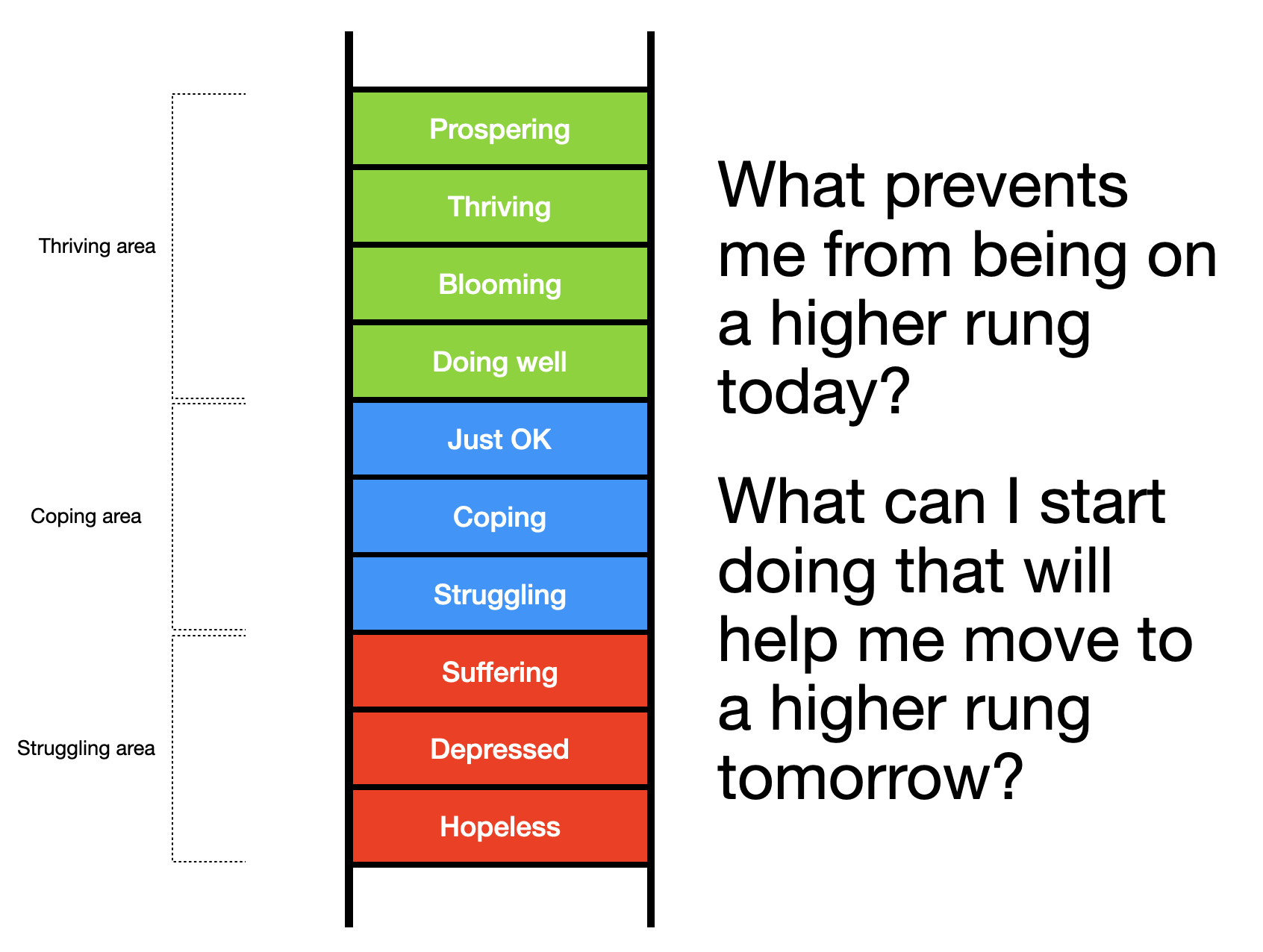Cantril ladder
I’ve been reading Ten Survival Skills for a World in Flux and encountered the idea of the Cantril Ladder.
To assess global happiness levels, the polling organisation Gallup uses the Cantril Ladder. This asks respondents to think of a ladder with the best possible life for them being a ten and the worst possible life being a zero. They are then asked to rate their own current lives on that zero to ten scale. You can do the same to keep track of your responses over time and ask yourself “what is causing the change?”.
I’ve since found that illustrations of the Cantril Ladder often have a word representing each rung and sometimes segment the ladder:
- Struggling being the lowest segment (starting at “hopeless”, moving to “depressed” and on to “suffering”)
- Coping (“struggling”, to “coping” to “Just OK”)
- Thriving (from “doing well” to “blooming” to “thriving” to “prospering”)
Why have I given this score and what changes can I make?
I think there’s a lot of value in the second part of what Tom Fletcher says:
You can do the same to keep track of your responses over time and ask yourself, “what is causing the change?”
Because this encourages us to think about what we might be able to do to impact this. It feels like there might be real benefit in periodically checking in with the Cantril Ladder and asking two questions:
- What prevents me from being on a higher rung today? This might include asking what positive aspects of your life you could amplify and which negative aspects you need to address
- What can I start doing that will help me move to a higher rung tomorrow.
